With all the at-home “partying” over the last year- and-a-half, loudspeaker manufacturer JBL may have had a hard time keeping up with the demand for its existing line of Bluetooth “party speakers,” which offer premium choices in a sea of alternatives that barely pass the eye test, let alone the ear test. Yet, instead of just putting production on repeat, the company wisely added to its line with the JBL PartyBox 110, a generous update to the popular, mid-sized PartyBox 100. With a striking new light show, substantial battery power, mobile app control, a splash-proof body, and wireless stereo pairing with a second speaker, the PartyBox 110’s features make a compelling argument that it deserves a spot on the more powerful end of the best portable Bluetooth speakers. And it sounds at least as good as it looks. To get the party started, just add beats and bodies. Let’s look at how the PartyBox 110 can satisfy a crowd or an intimate audience looking to sweat worries away.
Key features of the JBL PartyBox 110
The additional lighting elements that the PartyBox 110 boasts over the other JBLs like the PartyBox 100 or PartyBox 310 do make it more visually compelling and add an extra flair to the beat- synced patterns. Five such patterns offer various permutations of spinning, flashing, flowing, and color morphing.
While the PartyBox 110 is an audiovisual experience, the coolest lights in the galaxy would not save a party from crappy sound. Luckily, you won’t have to sweat that with the PartyBox 110, because it’s loaded with JBL Original Pro Sound- much of the same audio technology that JBL packs into its professional PA loudspeakers.
There’s no option to EQ, but the JBL PartyBox 110 does have two levels of Bass Boost, which you can cycle through (off/low/high) with the top-panel button. The other audio control includes a volume dial and a play/pause button for controlling the playback from a USB stick or the Bluetooth device. Pressing it twice quickly skips to the next track. On the back panel, two 1/4-inch audio inputs with volume knobs let you plug in a microphone and/or a guitar for people to either sing and play along with music or just for solo performances. The Mic input includes some “echo” on it by default, which sounds more like a reverb effect to me. The Guitar input does not add any effect on its sound but it also worked fine for a microphone if you want to sing duets from two mics.
The JBL PartyBox 110’s wattage is 160W RMS (root mean square), meaning that it can reliably sustain 160W of continuous power but reach peak levels even higher than that. So while it can’t hold a candle to the PartyBox 1000’s 1100W (which might blow out that candle with its bass), the PartyBox 110 is still a fairly boomin’ little system. However, if that’s still not enough for you, or if you just want to listen to a true stereo system, you can wirelessly pair two PartyBox 110 speakers with each other.


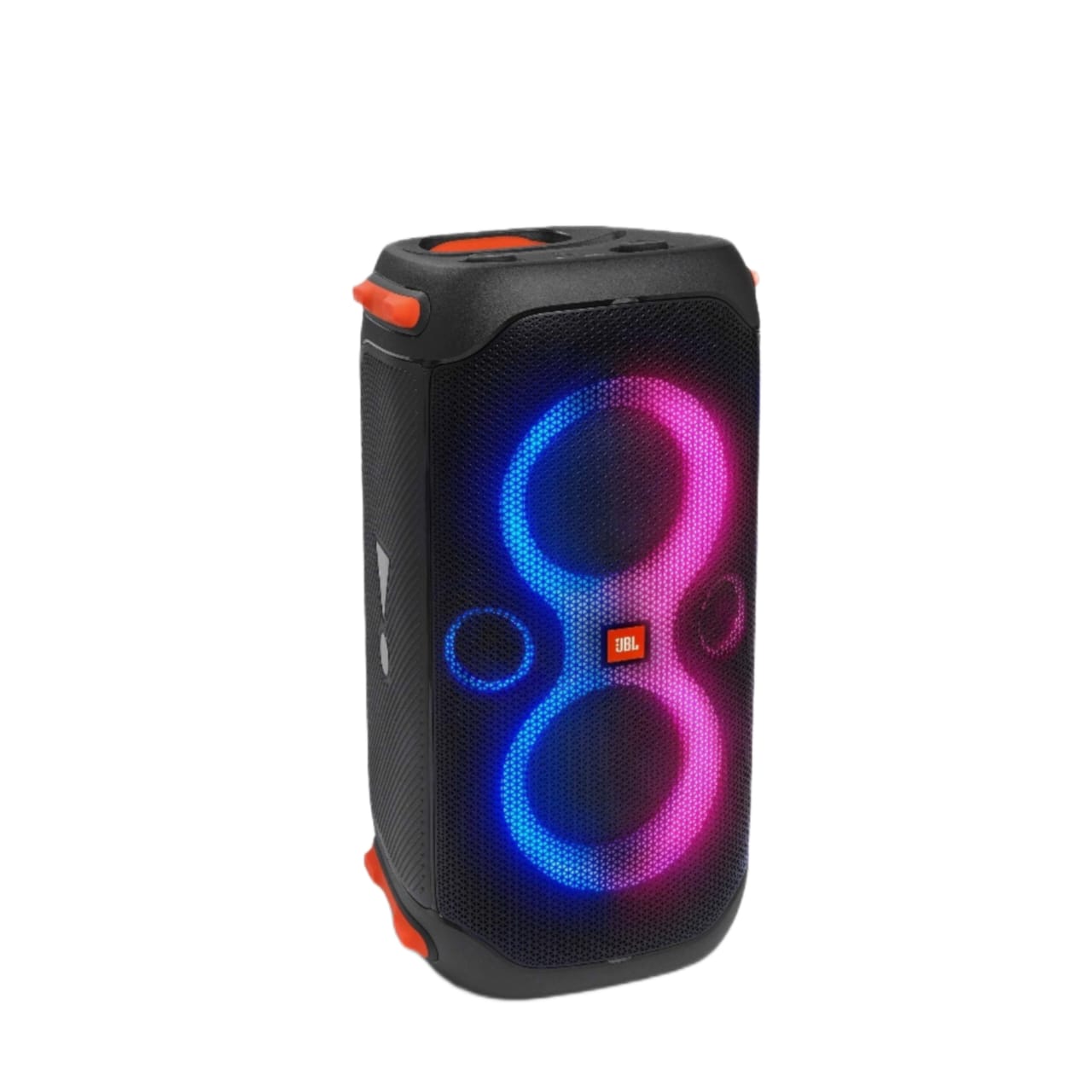
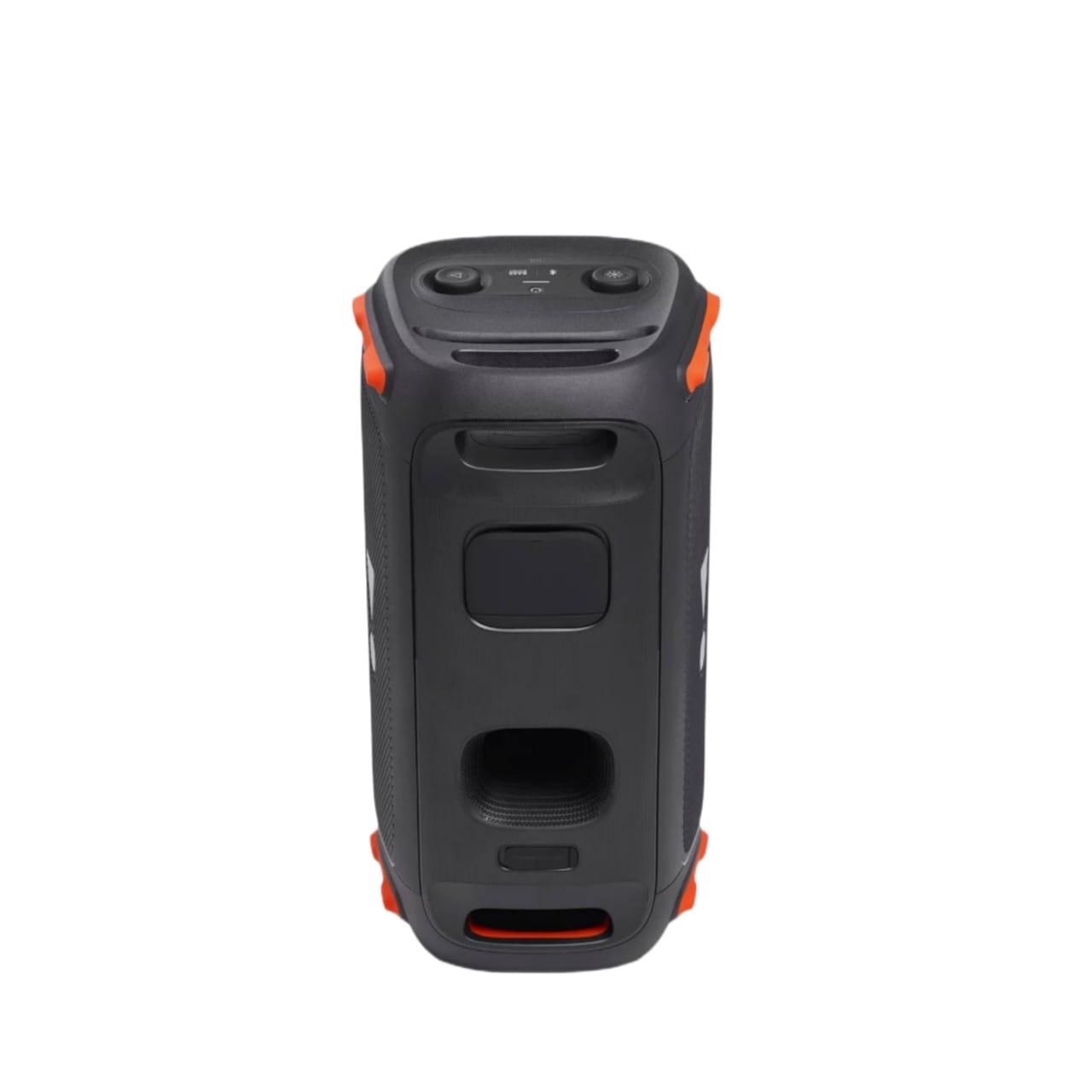

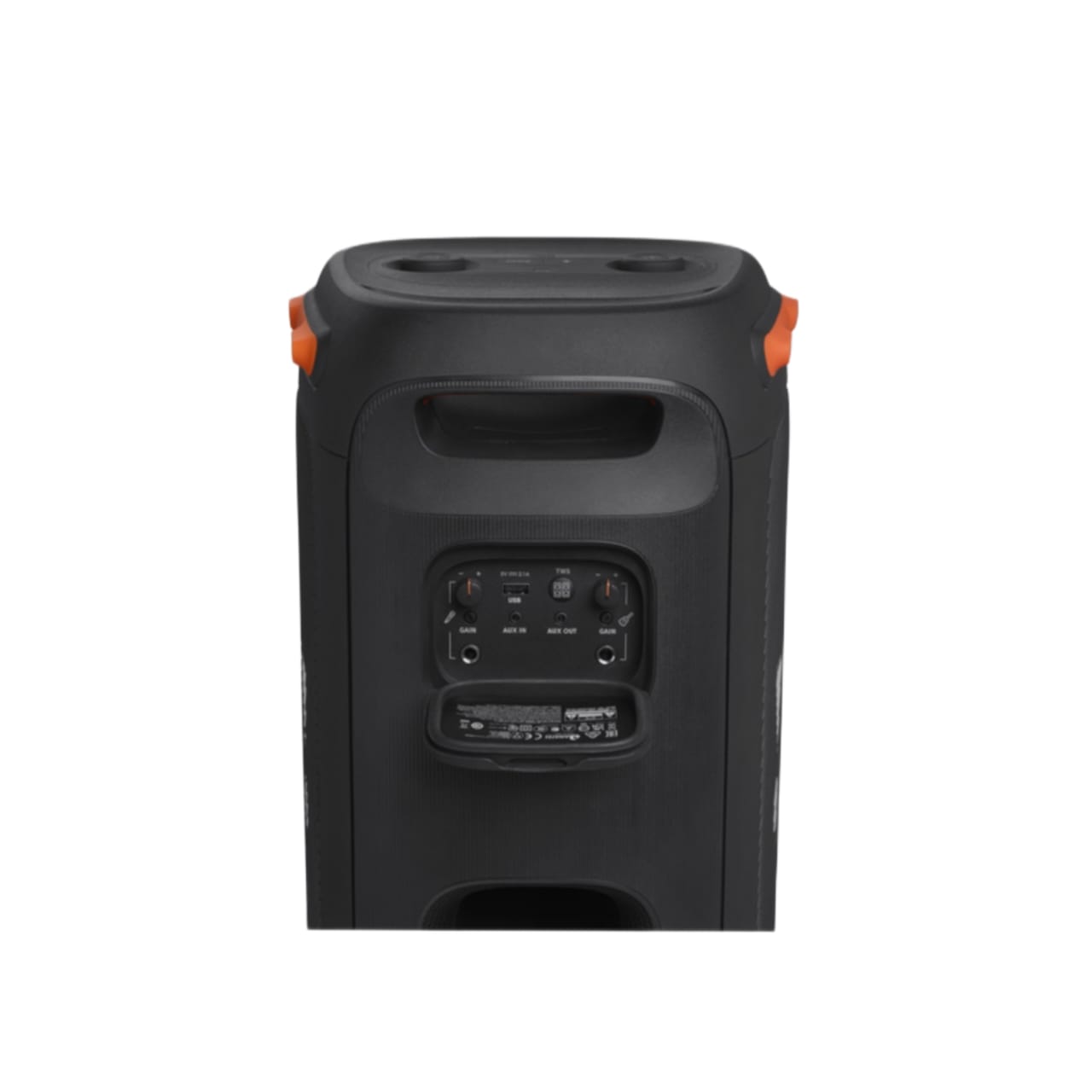
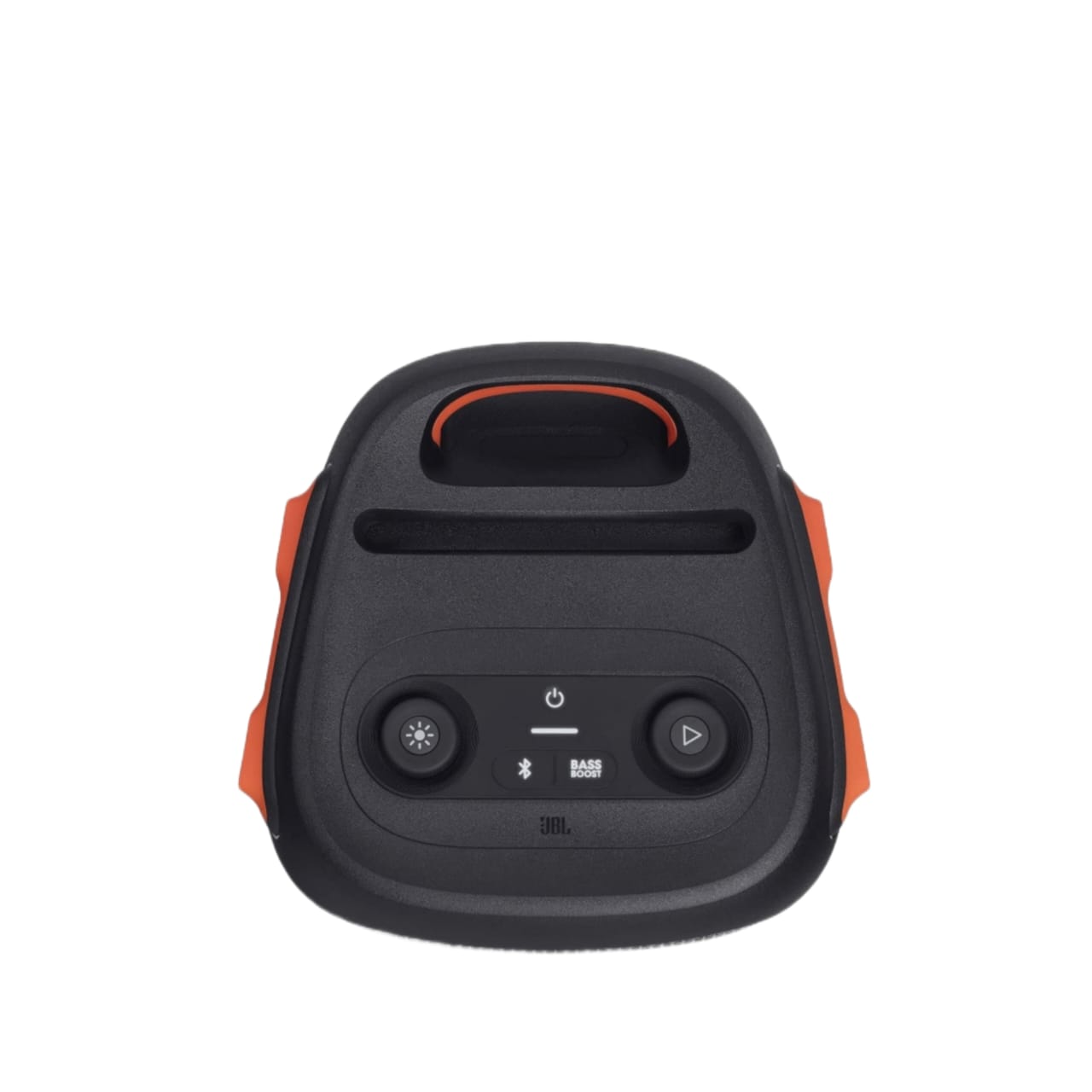
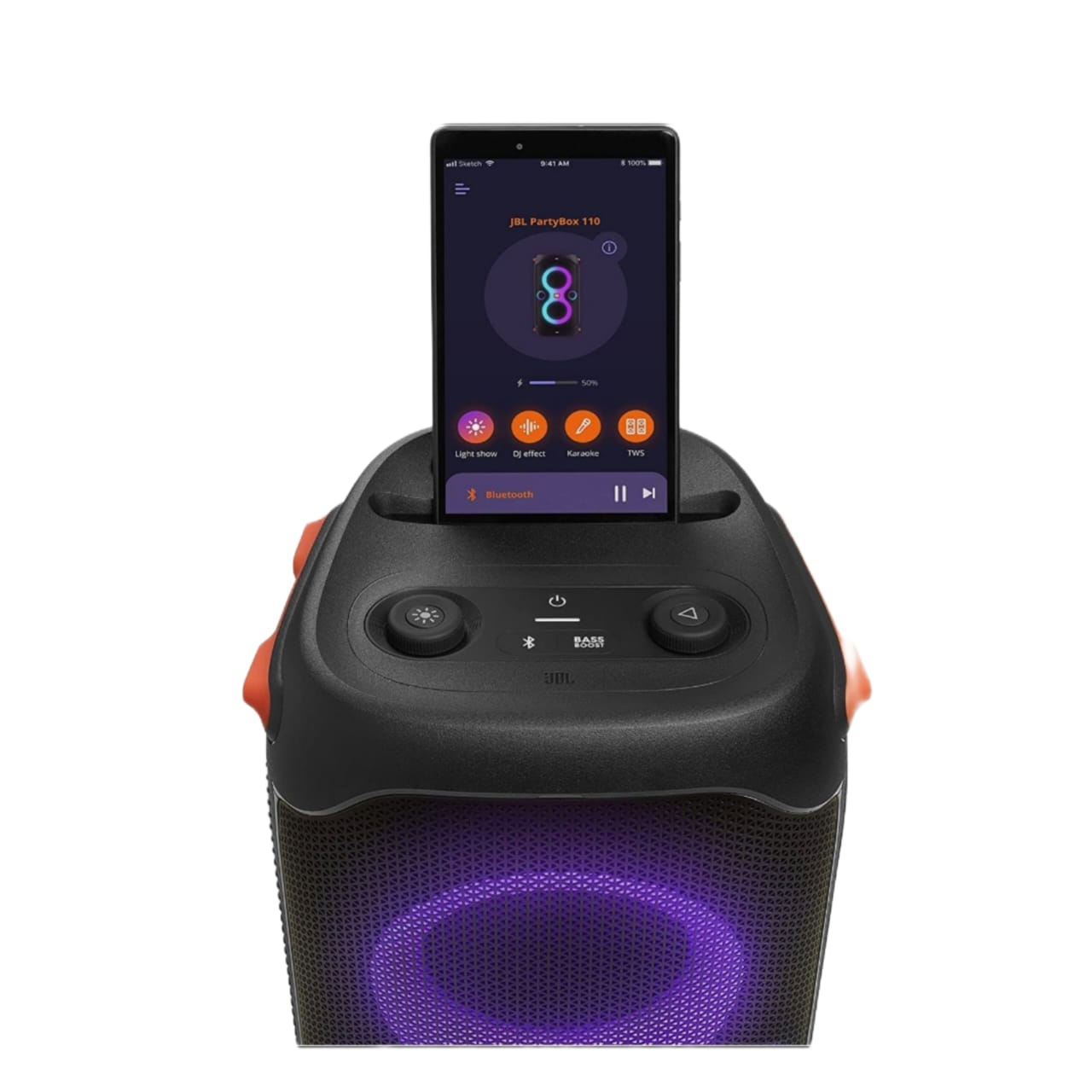
There are no reviews yet.